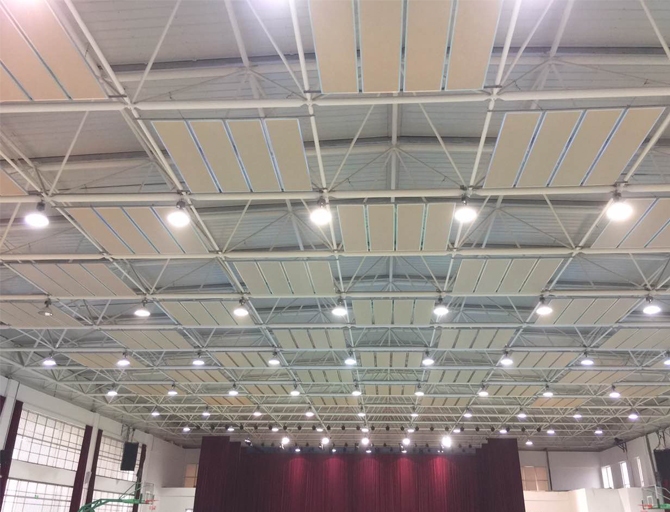Development prospect and employment direction of acoustics
Acoustics is a secondary discipline of physics, which studies mechanical waves (i.e. sound waves) in media. Its research scope includes the generation, acceptance, conversion and various effects of sound waves. At the same time, acoustic measurement technology is an important measurement technology, which has a wide range of applications. The simplest acoustics is the generation and propagation of sound, which is also the basis of acoustic research.
Sound is produced by the vibration of an object. The transmission of sound needs medium, which can spread in gas, liquid and solid, but the vacuum cannot. Sound travels at different speeds in different substances. Generally speaking, sound travels fastest in solid, second in liquid and slowest in gas. Moreover, the speed of propagation in the gas is also related to the temperature and pressure of the gas. Regular pleasant sounds are called musical sounds and irregular harsh sounds are called noises. Loudness, tone and timbre are three factors that determine the characteristics of musical sounds.
Training objectives
Master solid and broad basic theories and systematic and in-depth expertise in the discipline, understand the international frontier fields and development trends related to acoustic development, have certain ability to analyze and solve problems and strong ability to independently engage in scientific research, and make creative achievements in scientific research and special technology.
Discipline direction
Physical acoustics
Physical acoustics is the basic research direction of acoustics. At present, this direction has the following research sub directions. (1) Nonlinear acoustics: nonlinear vibration dynamics, nonlinear wave in fluid and particle medium under vibration excitation, nonlinear acoustic wave in periodic and complex medium (structure), nonlinear interface effect of acoustic wave, acoustic soliton and chaos. (2) Strong Acoustics: acoustic propagation, cavitation, sonoluminescence, etc. in multiphase media such as bubble liquid. (3) Acoustic air and acoustic agglomeration: the propagation of sound in fog like gas and particulate matter gas, the interaction between sound and matter, acoustic agglomeration, crystallization effect, etc.
Photoacoustics
This is an interdisciplinary direction formed by the combination of Acoustics (ultrasound) and optical information science and technology. It mainly studies the photoacoustic thermal wave effect and imaging technology, laser ultrasound theory and imaging technology, the application of photoacoustic technology in the nondestructive testing and evaluation of integrated circuits and materials, and microelectronic acoustic system.
Ultrasonics
This field studies the basic theory of ultrasound and its application in the fields of electronics, communication, industry, transportation, etc., and has the following two sub directions. (1) Ultrasonic Electronics: propagation theory of ultrasound in solid and composite media, surface acoustic wave phenomenon, design of composite ultrasonic transducer, surface acoustic wave communication device and its application in communication field, micro mechanical acoustic transmission and sensor device and its application. (2) Testing Acoustics: propagation characteristics of ultrasound in inhomogeneous, plate, layered or cylindrical media, ultrasonic guided wave technology, Lamb wave sensing technology, nondestructive testing and evaluation of ultrasonic industry, artificial sound band gap materials and their applications.
Biomedical ultrasound
It is an interdisciplinary direction formed by the combination of ultrasound, biology, medicine and other disciplines, and one of the frontier research directions of ultrasound and biomedical engineering. The main research fields include: (1) Medical Ultrasound Engineering: Theory and technology of medical ultrasound signal processing, new ultrasonic electronic diagnostic equipment and ultrasonic surgical equipment; (2) nonlinear ultrasound and medical imaging: nonlinear acoustic effect and acoustic propagation characteristics in biological media, nonlinear ultrasonic parametric imaging, high-frequency ultrasound imaging, ultrasound contrast agent, ultrasound image processing technology (2) ultrasound biomedical effect: physical, biological and chemical effects of ultrasound on human tissues and biomacromolecules, high intensity focused ultrasound and its medical application, ultrasound treatment of biological tissues, ultrasound safety and ultrasound dosimetry.
Audio frequency acoustics
Audio acoustics studies all acoustic problems in the audible range, mainly in the following sub directions. (2) Environment and building acoustics: noise and vibration control principle, active noise reduction technology and active anti noise earmuffs, noise evaluation and control; room sound field and its calculation, acoustic effect design of buildings and halls, sound insulation technology, acoustic stealth technology; (3) electroacoustics and sound engineering: speaker and sound reinforcement system, computer aided measurement and design of electroacoustic system, speaker design expert system And electroacoustic measurement expert system, digital audio technology.
Acoustic signal processing
There are two sub directions in this direction. (1) Speech signal processing: auditory model, speech recognition and mixed blind signal separation for information extraction under strong noise background, adaptive speech denoising, speech feature binary quantization and speaker recognition, speech artificial neural network processing; (2) nonlinear acoustic signal processing: chaotic acoustic signal processing and its application, nonlinear dynamics and nonlinear (chaotic) prediction model of speech and its application, Acoustic chaos coding and its application in secure communication.
Research direction
(01) ultrasonic testing
(02) hydroacoustics
(03) transducers and sensors
(04) acoustic signal processing
(the research direction of each enrollment unit is slightly different, taking Peking University as an example)
Prospects for development
Under the background of severe employment situation of college students, the proportion of graduates' further education is more than 50%. More than 60% of graduates continue to study, and the one-time employment rate of graduates has remained above 100% for a long time.
The employment trend is: 49% of masters go to foreign enterprises, 23% to high-tech enterprises, 9% to state-owned enterprises, others to enterprises, research and development, going abroad, etc.
From the perspective of employment trend, they are basically employed in Beijing and other major cities.
Direction of employment
The employment direction of acoustics is: colleges and universities, scientific research institutes and high-tech companies. Mainly engaged in audio engineering, architectural acoustics, noise control, ultrasonic electronic devices, ultrasonic medical instruments, and it industry related work.



